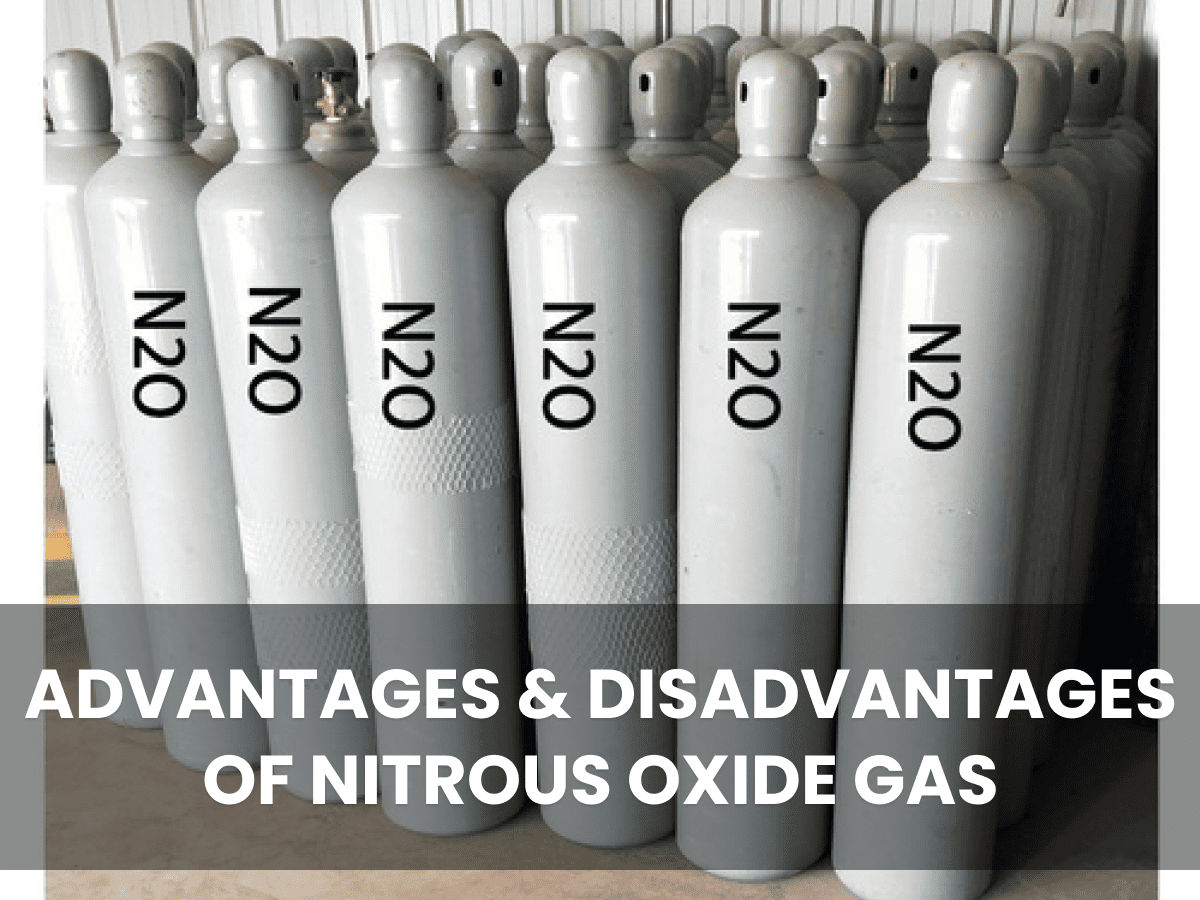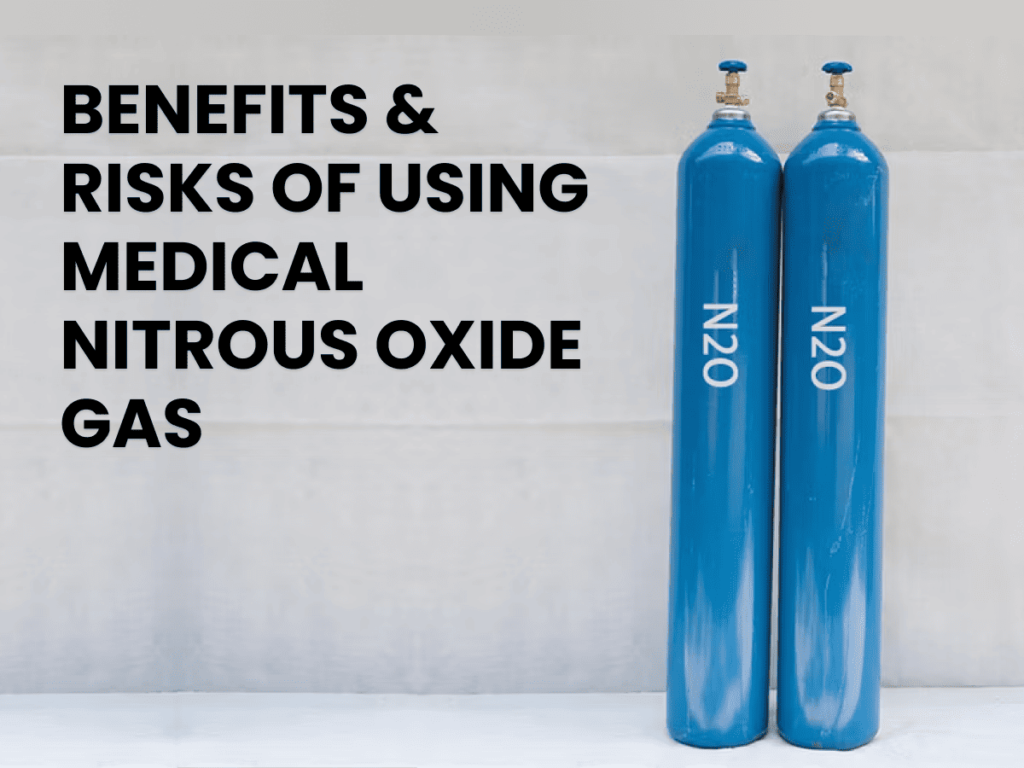At first, nitrous oxide was discovered by Joseph Priestley in 1772; however, he could not investigate its medical properties. Later, in 1844, Horace Wells, a dentist, identified its anesthetic effects and utilized it in dental procedures. N2O, commonly known as laughing gas, possesses sedative properties that reduce mental activity and alleviate pain. Since the 19th century, dentists and physicians have employed this gas to help relax patients during procedures or surgeries.
The sweet-smelling, colorless nitrous oxide gas is administered through inhalation via a nasal mask. A ratio of 2:1 indicates that two parts of nitrous oxide are provided alongside one part of oxygen to patients during the anesthesia process. Nitrous oxide is a medical gas that treats patients in sensitive conditions for pain relief. This gas is associated with medical gas filling services in hospitals and healthcare centers to address emergencies and critical situations. Now-a-days, medical gas filling is a necessary part of healthcare centers and is as important as any medicine.
How Nitrous Oxide Functions on the Nervous System of Patients?
Imagine you go for dental treatment or any surgery; what do you feel during the process? Obviously, severe pain can disturb the entire experience. In this situation, medical nitrous oxide helps you feel dizzy. This gas slows down the nervous system, allowing a patient to feel lightheaded and comfortable during the operation or surgery. It works quickly on your nervous system and reduces a patient’s anxiety caused by the fear of the procedure. This a an effective way to treat the patients during the medical procedures, and within 3 to 5 minutes, a patient feels:
- Relaxed
- Lightheaded
- Numbness and tingling in the legs and arms
- Feeling of happiness
- A pleasant mood rather than anxiety
- A little heaviness in the mind in some cases
All the states help to forget the pain and fear of the process, allowing it to proceed smoothly towards a successful end.
The procedure and duration of medical nitrous oxide
Your doctor or dentist psychologically administers nitrous gas. Through a complete process, this gas affects your nervous system. At first, physicians begin talking and ask a few questions of the patient, taking note of the consent before starting the procedure. After that:
- Your physician places a mask over your nose and mouth; if he is a dentist, then he only covers your nose.
- They start dosing from a very low amount to check your body’s reaction while opening the valve of the nitrous oxide tank.
- In the next step, they adjust the dose to the desired amount.
- Sometimes, combine it with other kinds of anesthesias based on the patient’s needs.
- They stop the flow of the gas after the procedure.
- They tell the patients to breathe in the oxygen through the mask to become fully active again.
- In the final step, they remove the mask from the patient’s face and monitor him for a few minutes.
Many people experience discomfort and hesitation when getting anesthesia for the very first time, and they can communicate this to their healthcare provider. This gas affects a person’s system until the flow is turned off. Its effects last for about 5 to 10 minutes on the human body, after which a person feels normal again.
Advantages and Disadvantages of Nitrous Oxide Gas

Nitrous gas is an effective source of pain relief for many medical conditions. It works quickly and effectively, but it has both advantages and disadvantages that everyone should be aware of.
Advantages:
- Every medical treatment arouses feelings of fear and anxiety, so nitrous oxide is used to reduce anxiety and calm the patient.
- Tension, stress, and fear disturb the human body and affect blood pressure levels, which can be dangerous for medical procedures. Nitrous oxide helps to maintain a normal flow and provides a feeling of comfort.
- It functions quickly with its powerful effects, and it takes a maximum of 5 minutes to feel relief, while it takes almost 5 to 10 minutes to return to normal condition. The patient can go home instantly after the treatment.
Disadvantages
- Although it has no harmful side effects from its medical use, a patient may experience nausea, vomiting, sweating, fatigue, and dizziness.
- If the dose of the gas flow is accidentally increased, it can damage the nerve, cause anemia, or lead to vitamin B12 deficiency.
Doctors avoid dosing it to pregnant women, patients with a history of mental disorders, and those with respiratory conditions. In all these cases, it can be harmful to the patients, so individuals with certain conditions must bear the pain during their medical process.
One major cause of side effects can be the unreliable and unprofessional gas supply. Therefore, doctors should ensure that professional suppliers refill their medical nitrous oxide gas cylinders to provide smooth operations.
Why do Professional Medical nitrous oxide suppliers require it?
Health is a sensitive issue for human beings, and accurate medical treatment is the greatest necessity for patients. Many medical conditions require tools and gases to ensure patient comfort. Nitrous oxide gas is used in critical conditions to provide pain relief. For this purpose, the gas should be to international standards to prevent patients from any harm.
For purity standards, professional medical nitrous oxide suppliers should be reliable, trained, and licensed holders to ensure quality and adhere to established medical rules and standards. This gas is a kind of liquid with extremely cold properties, so nonprofessionals can not handle it safely. Only trained experts can manage to handle, transfer, and transport it to the healthcare centres.
There are many regulations regarding how to fill, test, label, and maintain the cylinders. These regulations include proper construction, a pressure test, chemical formula, and tare weight. Credible suppliers ensure a trained staff to manage all the complexities, using appropriate equipment to prevent accidents. After delivery, they properly guide the medical staff and physicians on how to handle and use these cylinders with security precautions. Therefore, always choose trusted suppliers because human lives are very precious.

